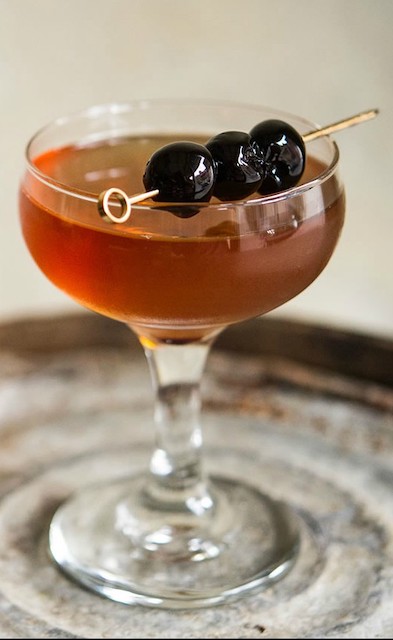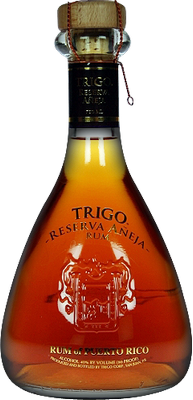After the devastation of Hurricane Maria, rum was likely the last thing on many people’s minds as they worked to rescue friends and family on the island. It’s been one month since the storm, and still one million of Puerto Rico’s citizens do not have running water, while three million are trying to survive without electricity. But there is some good news for the island that depends heavily on its exports to keep its economy running.
With more than 70 percent of rums consumed in the United States coming from Puerto Rico, the spirit has been an integral part of its economy since the 16th century. You might think of Jamaica or Barbados first when it comes to rum production, but the unofficial spirit of the Caribbean has been a cultural product of Puerto Rico for centuries. In fact, the island actually has its own government program solely dedicated to preserving this artisanal export. Created in 1948, the program (aptly titled “Rums of Puerto Rico”) is managed by the Puerto Rico Industrial Development Company and seeks to highlight the heritage and tradition behind 450 years of producing quality rum.
Rum, like many things in history, was a happy accident. During the sugarcane refining process on plantations in the 17th century, molasses was a byproduct that folks didn’t just throw away. Instead, they found that if they fermented the sticky-sweet substance, it would turn into something a little stronger — and a lot more entertaining. A few technological advancements later, by a process of fermentation and distillation, it was turned into rum (or “ron” as Puerto Ricans call it).

One of the best (and lesser-known) aged rums from the island comes from Trigo Corp, a family-owned business that’s been serving the Puerto Rican market since 1886. Today, they specialize in the aging and blending of rums on the historical “Central Constancia” grounds, one of the oldest sugarcane “Haciendas” on the Rio La Plata basin. Headed by Benigno Trigo, a third-generation rum maker, they acquire their distilled “virgin” rum from the nearby Bacardi distillery before beginning their aging process.
Bacardi, the largest premium rum distillery in the world, has called Puerto Rico home since 1936. Though there was extensive material damage after Hurricane Maria, Bacardi’s rum and distillation equipment was untouched, and as of mid-October, the distillery is back to running at full capacity. Besides providing much-needed revenue for the island during their challenging recovery, Bacardi has also pledged $2 million to help fund three “Stop & Go” community relief centers that will provide meals, entertainment and electricity to the island’s citizens.
Bacardi’s grounds will also be used for a benefit concert-telethon on October 22, called Unidos for Puerto Rico, an initiative created by the office of First Lady Beatriz Rosselló and private sector groups (including Bacardi). With the weeks past full of tragedy and economic strife, it is truly good news to Puerto Rico that one of their chief exports, rum, is back in business.

With Bacardi back on track, Trigo Rum has also resumed its production process in the nearby Toa Baja neighborhood. The family-owned company has produced three distinct rums since the 1980s. Ron Cañita Artesanal Alambique, one of the first legal moonshine-style rums made in the island, packs a unique punch of spice and flavor. Ron Bugalú is a flavored coconut rum that goes perfectly in any beachside cocktail. And finally, Trigo Reserva Añeja is their ultra-premium offering that’s a blend of Puerto Rican rums aged up to ten years in American oak barrels — with a few secret ingredients added to give it a bold bouquet of flavors.
Añeja is said to have two different rum “personalities.” The first sip is dry, revealing the personality of Caribbean rums. The second sip reveals a sweet aftertaste, which is characteristic of a Coast rum. “They work to find the unique aromas and taste characteristics they want,” says Rico. “This is why their rums can taste completely different depending on what stage of the aging process.”
The Reserva Añeja is truly handcrafted and produced only in small quantities. And with such a particular blend and quality, not just any packaging will do. Trigo’s bottle is designed to be used as a rum decanter that allows the rum to open up faster, as well as a champagne-style cork. The Añeja’s woody, sweet tones and a warm, mild finish make it ideal for sipping slowly.
As far as mixing cocktails with aged rum, Rico says, “Depending on how old it is, you’ll want to drink it straight or use very mild flavor mixers, such as fresh fruit. It’s also very important to try to keep the color of the rum — as this will tell you that all the aging characteristics are still there.”
Whether you drink it neat or in a daiquiri, there’s never been a better time to enjoy Puerto Rican rum and uphold its title as the “Rum Capital of the World.”
For more information on how Bacardi is supporting Puerto Rico, visit this link, and click here to donate to the Puerto Rican First Lady’s recovery efforts.





